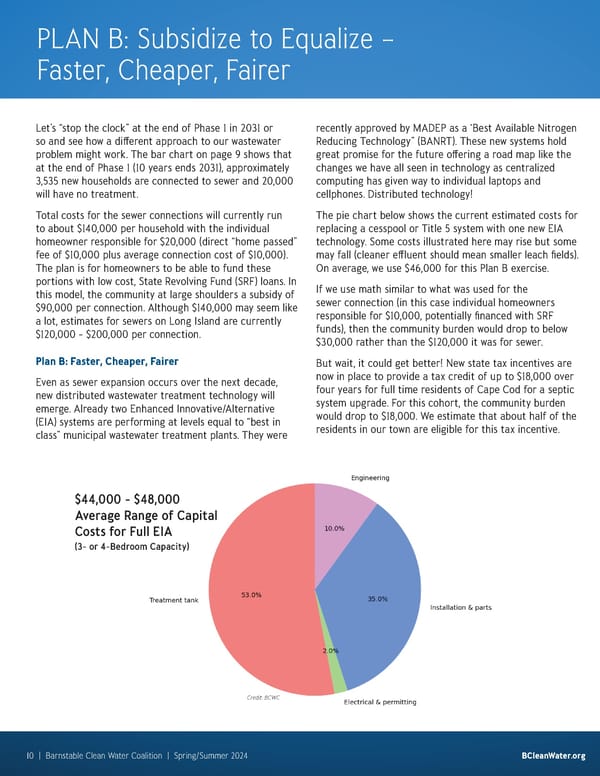PLAN B: Subsidize to Equalize – Faster, Cheaper, Fairer Let’s “stop the clock” at the end of Phase 1 in 2031 or recently approved by MADEP as a ‘Best Available Nitrogen so and see how a di昀昀erent approach to our wastewater Reducing Technology” (BANRT). These new systems hold problem might work. The bar chart on page 9 shows that great promise for the future o昀昀ering a road map like the at the end of Phase 1 (10 years ends 2031), approximately changes we have all seen in technology as centralized 3,535 new households are connected to sewer and 20,000 computing has given way to individual laptops and will have no treatment. cellphones. Distributed technology! Total costs for the sewer connections will currently run The pie chart below shows the current estimated costs for to about $140,000 per household with the individual replacing a cesspool or Title 5 system with one new EIA homeowner responsible for $20,000 (direct “home passed” technology. Some costs illustrated here may rise but some fee of $10,000 plus average connection cost of $10,000). may fall (cleaner e昀昀luent should mean smaller leach 昀椀elds). The plan is for homeowners to be able to fund these On average, we use $46,000 for this Plan B exercise. portions with low cost, State Revolving Fund (SRF) loans. In If we use math similar to what was used for the this model, the community at large shoulders a subsidy of sewer connection (in this case individual homeowners $90,000 per connection. Although $140,000 may seem like responsible for $10,000, potentially 昀椀nanced with SRF a lot, estimates for sewers on Long Island are currently funds), then the community burden would drop to below $120,000 - $200,000 per connection. $30,000 rather than the $120,000 it was for sewer. Plan B: Faster, Cheaper, Fairer But wait, it could get better! New state tax incentives are Even as sewer expansion occurs over the next decade, now in place to provide a tax credit of up to $18,000 over new distributed wastewater treatment technology will four years for full time residents of Cape Cod for a septic emerge. Already two Enhanced Innovative/Alternative system upgrade. For this cohort, the community burden (EIA) systems are performing at levels equal to “best in would drop to $18,000. We estimate that about half of the class” municipal wastewater treatment plants. They were residents in our town are eligible for this tax incentive. $44,000 - $48,000 Average Range of Capital Costs for Full EIA (3- or 4-Bedroom Capacity) Credit: BCWC 10 | Barnstable Clean Water Coalition | Spring/Summer 2024 BCleanWater.org
 BCWC Newsletter Spring Summer 24 FINAL Page 9 Page 11
BCWC Newsletter Spring Summer 24 FINAL Page 9 Page 11